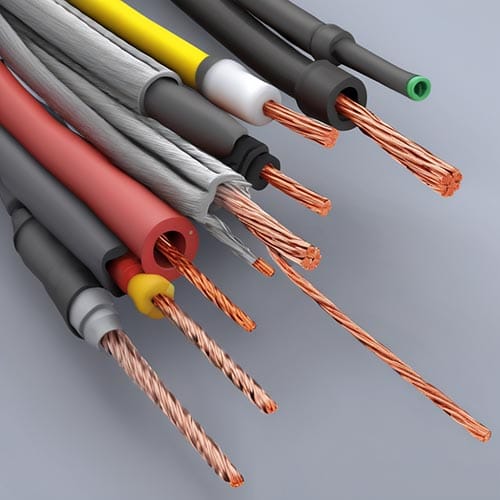In the world of cables, LSZH (Low Smoke Zero Halogen) has gained significant attention due to its unique properties and safety advantages. This article aims to explain what LSZH cables are, their characteristics, and their uses, and compare them with PVC (Polyvinyl Chloride) cables.
What is a LSZH Cable?
LSZH cables are a type of cable that is designed to emit minimal smoke, toxicity, and corrosive gases when exposed to fire. Unlike PVC cables, LSZH cables are made of special compounds that do not contain halogens, such as chlorine, bromine, or fluorine. This makes them a safer alternative in environments where human safety is a priority.
Characteristics of LSZH Cables:
- Low Smoke Emission: LSZH cables emit significantly less smoke when exposed to fire, improving visibility and reducing the risk of smoke inhalation, which is a major cause of casualties in fire incidents.
- Low Toxicity: LSZH cables produce minimal toxic gases during combustion, reducing the risk of harm to people and sensitive equipment.
- Low Corrosion: LSZH cables have reduced corrosive properties, making them suitable for installations in sensitive environments, such as data centers, where equipment damage due to corrosive gases can be a concern.
- Flame Retardant: LSZH cables are designed to be self-extinguishing and have a higher resistance to flames, reducing the spread of fire.
Where to use LSZH Cables:
- Residential and Commercial Buildings: LSZH cables are ideal for installations in buildings where large numbers of people gather, such as offices, schools, hospitals, and shopping centers.
- Data Centers: LSZH cables are preferred in data centers to protect sensitive equipment from potential damage caused by corrosive gases.
3.Transportation: LSZH cables are used in railways, airports, and tunnels, where the risk of fire is high, to ensure the safety of passengers and minimize damage to infrastructure.
Is LSZH cables Better than PVC cables?
- Safety: LSZH cables are considered safer than PVC cables due to their low smoke emission, toxicity, and corrosion properties. On the other hand, PVC cables emit dense smoke, toxic gases, and corrosive fumes when exposed to fire.
- Environmental Impact: LSZH cables are more environmentally friendly as they do not release halogens or other harmful substances into the atmosphere during combustion. PVC cables, however, release toxic fumes and contribute to air pollution.
4.Cost: LSZH cables are generally more expensive than PVC cables due to the specialized materials used in their manufacturing process. However, the added safety benefits and reduced risk of damage to equipment may justify the higher cost in certain applications.

How can I choose the cables between LSZH cable and PVC cables?
- Regulations and Standards: It is important to consider local regulations and specific industry standards when choosing between LSZH and PVC cables, as requirements may vary.
2.Application Specificity: The choice between LSZH and PVC cables depends on the specific application requirements. While LSZH cables provide enhanced safety, PVC cables may be sufficient for low-risk environments where safety regulations are not as stringent.
Lastly, let’s summarize this article.LSZH cables, with their low smoke emission, low toxicity, and low corrosion properties, offer significant safety advantages over PVC cables. Although LSZH cables may be more expensive, their use in environments where human safety is critical is highly recommended. It is essential to assess the specific requirements and regulations of each application to make an informed decision on whether LSZH or PVC cables are the better choice.
If you have any quetions about LSZH cables,welcome to talk to TESTECK.




